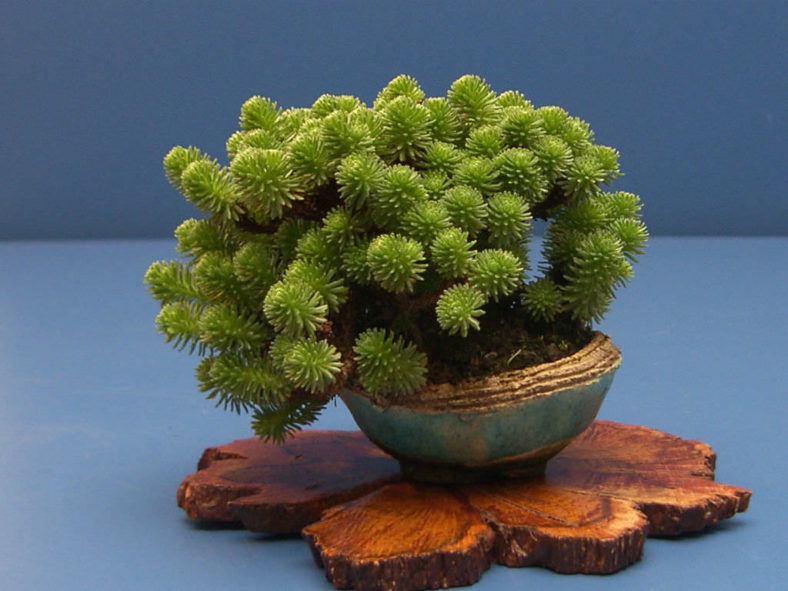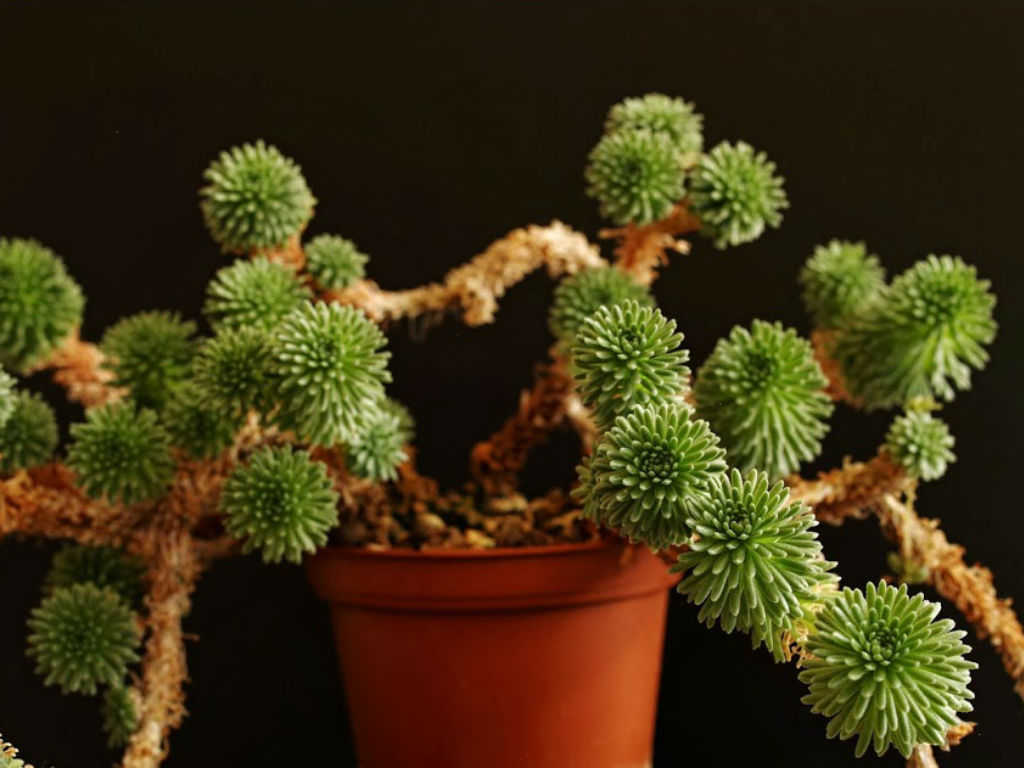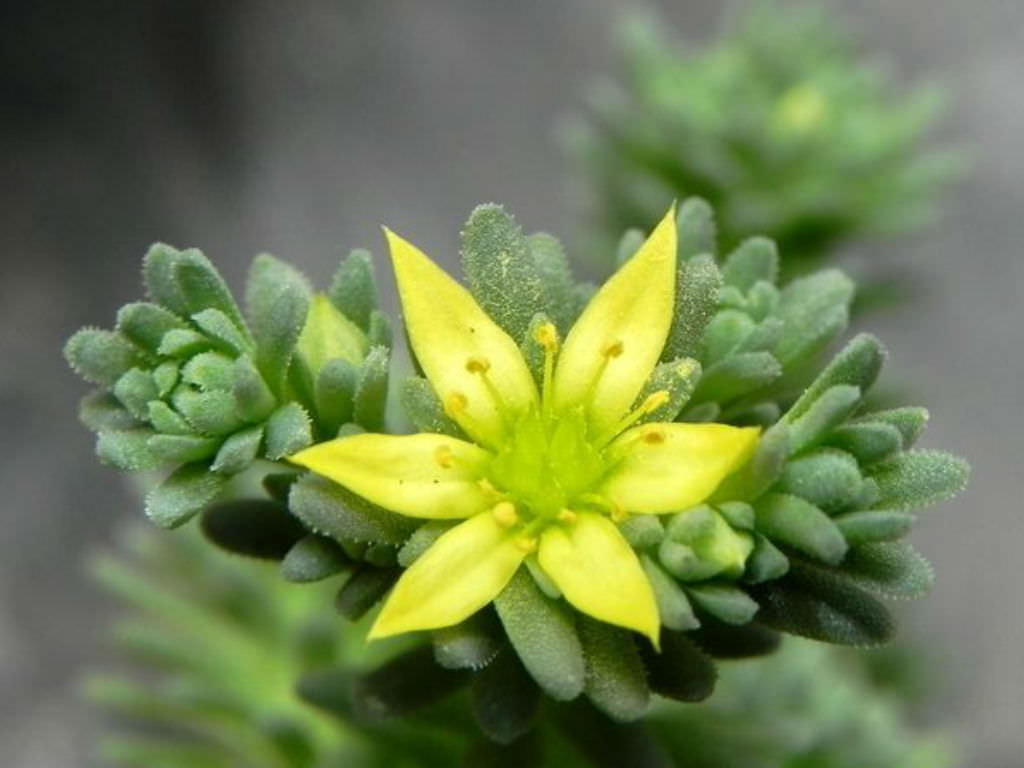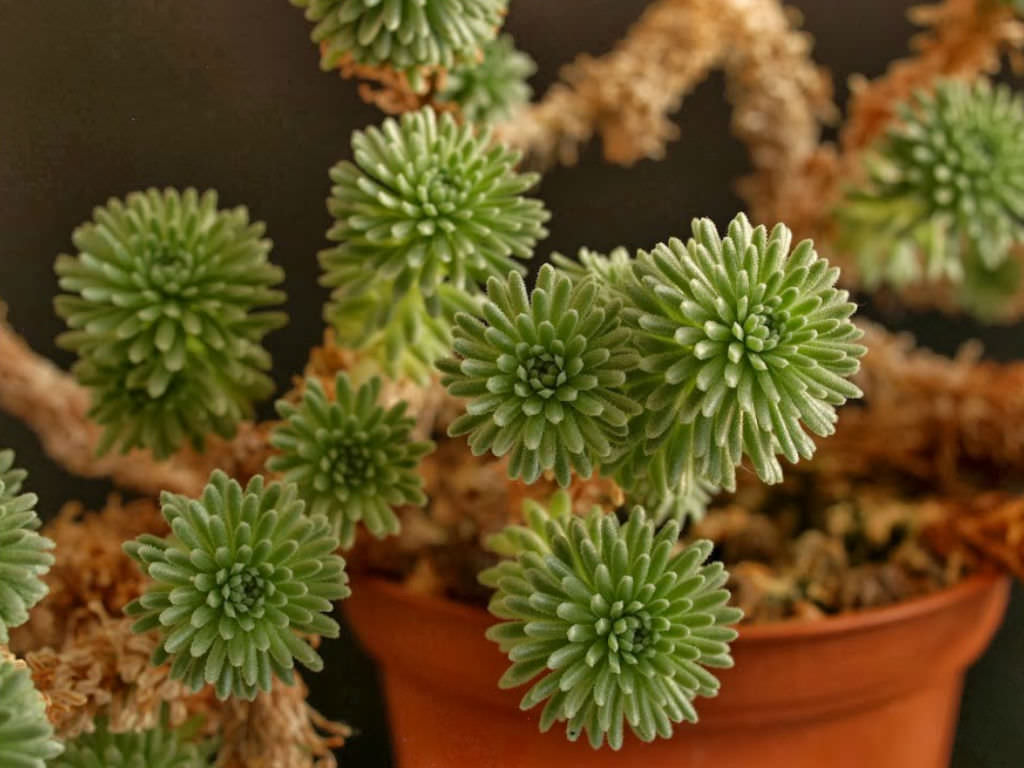Scientific Name
Sedum multiceps Coss. & Durieu
Common Name(s)
Baby Joshua Tree, Little Joshua Tree, Miniature Joshua Tree
Scientific Classification
Family: Crassulaceae
Subfamily: Sempervivoideae
Tribe: Sedeae
Genus: Sedum
Etymology
The specific epithet "multiceps" (pronounced "MUL-tee-seps") means "many-headed" and refers to the tufts of leaves at the end of the branches of this species.
Origin
Sedum multiceps is native to Algeria but cultivated in many Mediterranean areas. It grows on limestone rocks from sea level to an elevation of 4,900 feet (1,500 m) in Kabylia and the surrounding areas of Constantine.
Description
Sedum multiceps is a small succulent shrub with erect or ascending, highly branched stems topped with tufts of linear, papillate leaves. It can grow up to 6 inches (15 cm) tall. The stems are succulent, quite sturdy, and hairy, with dead leaves at the base. The leaves can measure up to 0.4 inches (1 cm) in length and approximately 0.1 inches (0.2 cm) in width.
The star-shaped flowers, which appear in clusters in summer, have 5 to 7 yellow petals and can reach a diameter of 0.5 inches (1.3 cm).

How to Grow and Care for Sedum multiceps
Hardiness: USDA hardiness zones 8a to 10b: from 10°F (-12.2°C) to 40°F (4.4°C).
When growing Sedums, keep in mind that these plants need very little attention or care. They will thrive in conditions where many other plants do, but also perform just as well in less hospitable areas. They are ideal for that part of your yard that receives too much sun or too little water to support the growth of other plants. A common name for Sedum is Stonecrop because many gardeners joke that only stones need less care and live longer.
Sedum is easily planted. For shorter varieties, simply laying the plant on the ground where you want it to grow is usually enough to get it started. The plant will send out roots from wherever the stem touches the ground and the root itself. To ensure the plant starts off well, add a very thin layer of soil covering.
You can break off one of the stems for taller varieties and push it into the ground where you want to grow it. The stem will root very easily, and a new plant will be established in a season or two.
Learn more at How to Grow and Care for Sedum.
Links
- Back to genus Sedum
- Succupedia: Browse succulents by Scientific Name, Common Name, Genus, Family, USDA Hardiness Zone, Origin, or cacti by Genus
Photo Gallery
Click on a photo to see a larger version.


